Celta Vigo have had a true rollercoaster of a season in the 2018/19 La Liga campaign. What started off as a year fuelled by decent ambitions and standard expectations, soon turned to chaos, despair and relegation battles until the very last minute of the competition. A lot of their problems stemmed from Iago Aspas’ injury halfway through the season similarly how his recovery brought salvation in the latter stages of it.
There are not many players who influence their teams as much as Iago Aspas influences Celta Vigo, bar maybe Lionel Messi and Barcelona, but as with much everything else, the Argentine is simply off the charts and just being compared to him in this regard means that Aspas has truly risen to the occasion.
This tactical analysis will look to shed some light onto Iago Aspas’ brilliant season at Celta Vigo which saw him singlehandedly save his team from the jaws of relegation and help preserve their La Liga status.
Player overview
Iago Aspas is a tried and tested veteran of the game. With 31 years already on his back, he has gone through thick and thin with Celta Vigo, the team he joined as an eight-year-old kid who lied about his age so he could get in, and will most likely have to be carried out on a stretcher when he decides to retire at the very same place he started his adventure. And that, we can say without a shadow of a doubt. He did have a short spell with both Liverpool and Sevilla meshed somewhere in between but his heart was in Vigo the whole time.
Standing at 5’9” (176cm), Aspas is not really a dominant presence in the box, and with his career slowly approach the twilight, he has lost some pace and stamina, but that doesn’t stop him at being one of the deadliest strikers in La Liga and quite possibly, one of the greatest overachievers in the world.
His predominant position on the pitch is that of a clear-cut striker as he spends 56% of his time there but he is also versatile enough to slot into a more deeper, number 10 role or that of an attacking midfielder (8%) but also to wider areas as a wide right-midfielder (14%) and a right-winger (19%).
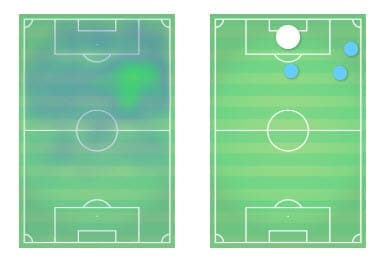
Reviewing the stats
As much as we love to go into analyses of whole teams, dissecting the details of what makes a team tick; what makes them so special; what’s their greatest strength; what’s their favourite tactic, sometimes, and only sometimes, the answer is the most simple, and the obvious one. In this case, the answer is just a name – Iago Aspas.
And without exaggeration, Iago Aspas is certainly the bread and butter of this Celta Vigo team, the alpha and omega and the single most crucial piece of their gaffer Fran Escribá’s system. Even if he is not necessarily the most aesthetically pleasing player to watch and even if the things he does are not some of the best moves you will ever see on a football pitch, Aspas is as deadly as they get, and the stats clearly support it.
Of the 27 games Celta Vigo played without their talisman, they have won only five, losing a gruesome total of 18 in the process. Similarly, with him in the team, they scored three times as many goals as they have without him. After his serious calf injury just before Christmas, they were in no real danger of plummeting so deep, and yet, it all seemed to fall apart with just one piece missing.
Since that moment, they’ve played 12 games without him, losing 10 in the process and winning just once, picking up only four points as opposed to the 24 while he was still fit and playing. But even that doesn’t do his heroics the justice they deserve.
The image below shows the ratio between expected non-penalty goals and the real non-penalty goals scored in the 2018/19 La Liga campaign. Notice how Iago Aspas is one of the only players overperforming his xG value on a consistent, week in, week out basis.
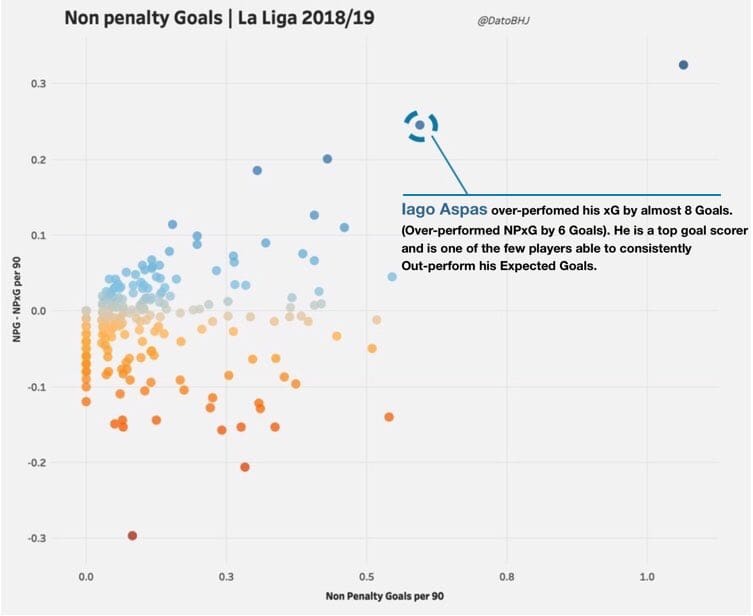
That dot in the far right corner of the image is Lionel Messi so you can just ignore that one. But the players like Luis Suárez, Antoine Griezmann, Christian Stuani, Karim Benzema and Gonçalo Guedes are all below him by quite a margin. Aspas consistently overperforms his xG and he does so by almost eight goals.
To put that a bit more into perspective, let’s see how he fares against the rest of the top dogs in top five European leagues. The image below shows us the most efficient goal-scorers across Europe (stats from late April) and to no one’s surprise, Aspas is at the very top of the food chain, just below the extraterrestrial being that is Messi.
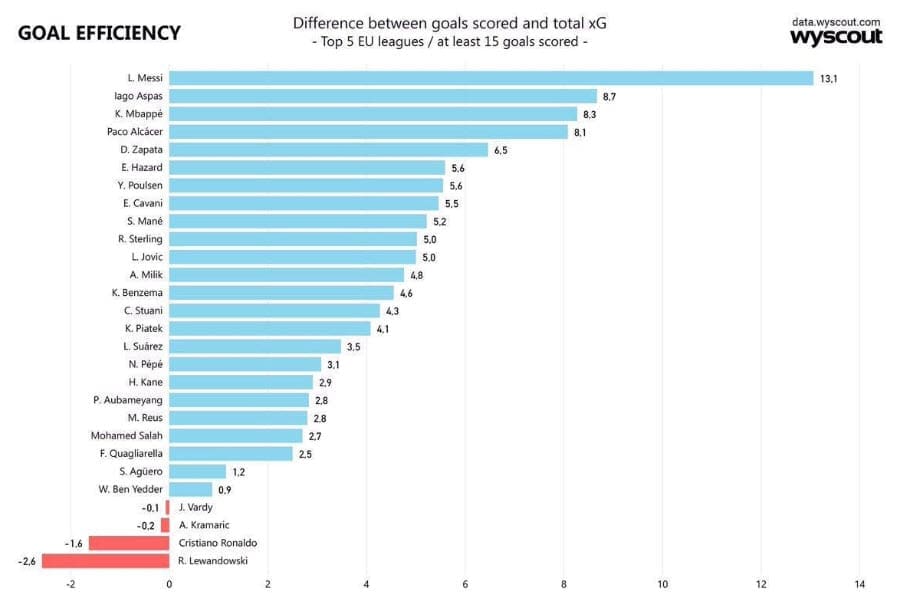
Even the biggest of names struggle to replicate such consistent numbers even if they straight up outscore Aspas, which does give him a somewhat smaller sample than the likes of Kylian Mbappé, for example.
As far as La Liga goes, he scored 20 goals in 27 appearances and is ranked as the fourth-best goalscorer of the Spanish 2018/19 campaign, just one behind Luis Suárez and Karim Benzema who share the second spot while having played six games less than the Uruguayan and nine games less than the Frenchman.
Quite impressive, to say the least.
Tactical profile
Iago Aspas is not a player who thrives on great technical ability or aesthetically beautiful moves. He’s a mix of a traditional striker and a modern one in the best sense possible. Although his greatest strengths lie in exceptional positioning, situational awareness and lethal finishing, he also supports the build-up, is versatile enough to compensate different situations unfolding on the pitch and is keen on both starting and finishing the actions. But, let’s start at the top.
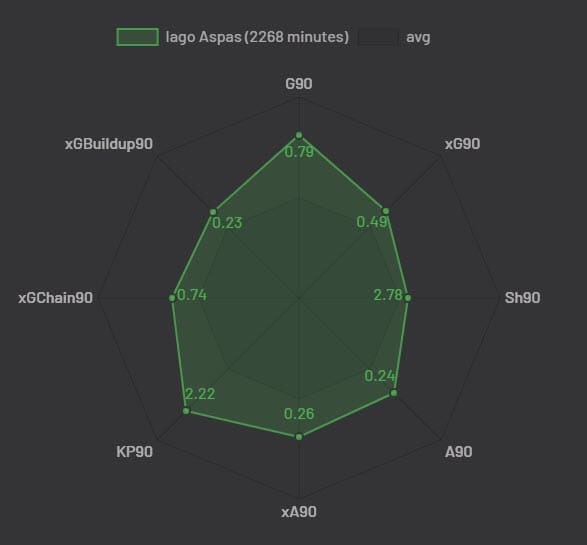
Aspas has that tendency to always be at the right place at the right time but there’s a difference in being lucky and actually orchestrating your own advantageous situation. This experienced forward certainly does the latter with a touch of the former.
In the example below, Aspas lingers on the edge of the box, tightly marked by two defenders. However, as his teammate rushes forward on the left flank, he has to act quickly to rid himself of the opposition’s players. Firstly, he positions himself directly at the defender’s blind spot, making sure he is not aware of his movements.
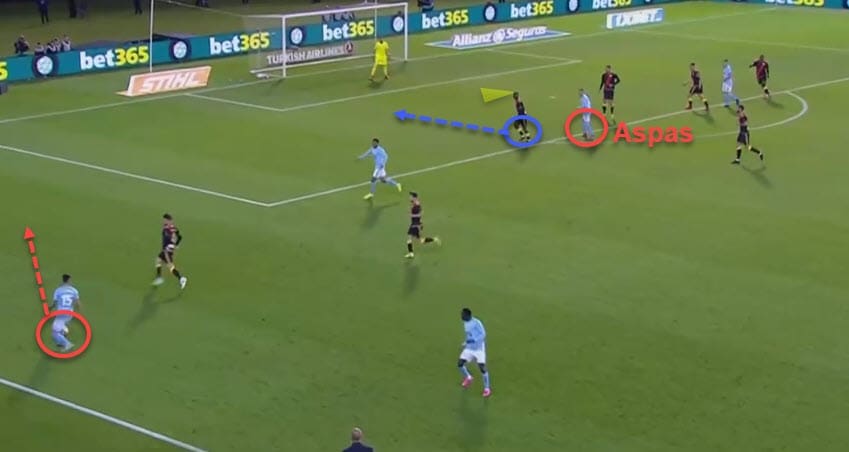
Secondly, notice below how he stops shortly and lets the defender push forward, which in turn creates distance between the two, leaving Aspas in more free space than he originally was. When the moment is right, he burst forward, maintaining his positioning behind the defender and makes sure he gets to the ball first.
Granted, this was well-orchestrated but also partly the opposition’s defender’s fault for not reacting properly and in time, letting the cross past him in the first place.
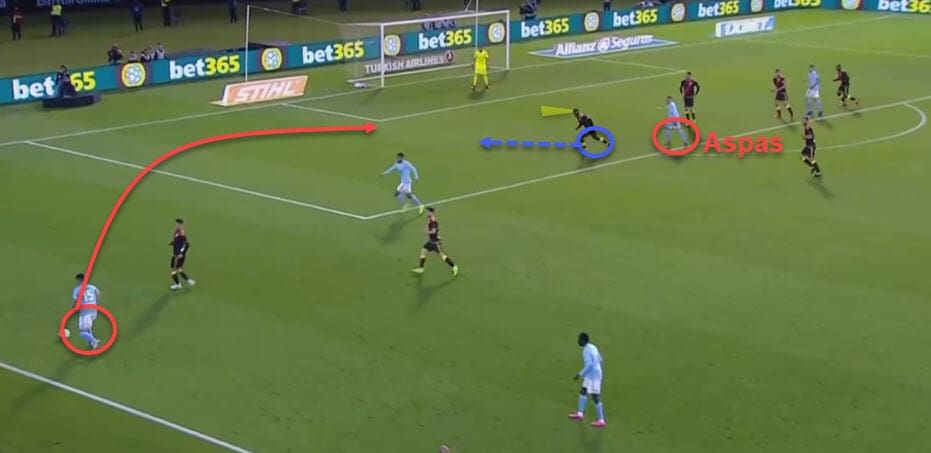
But the thing is, he does this all the time and always exceptionally well. Take a look at yet another example in the image below. Once again, he utilises his teammate’s run out wide, which grabs the defenders’ attention, to position himself at his blind spot. Once he’s done that, he waits until the opponent has lost track of him, stops shortly to create distance and avoid the offside trap and then pounces on the ball for a true poacher’s finish.
Fool me once, shame on you, fool me twice…
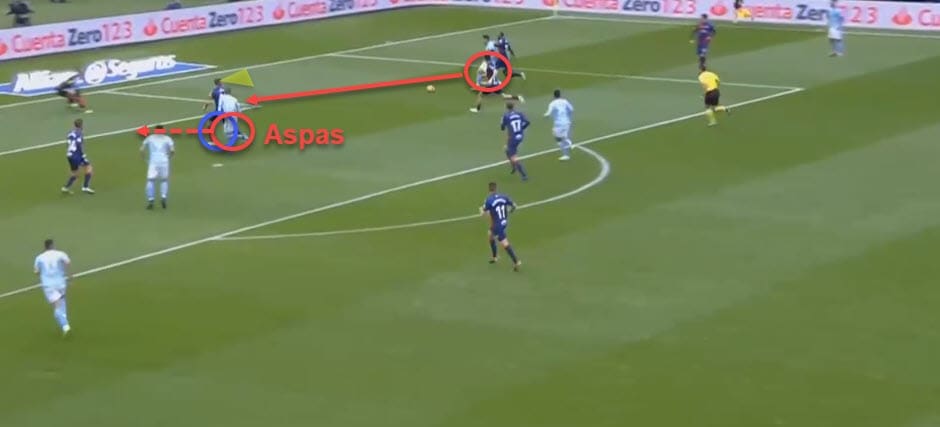
Another clear aspect of his game is the build-up contribution. Even though this is not really at the level of some of the best modern number nines such as Harry Kane or Roberto Firmino, Aspas does like to drop a bit deeper to support the link-up play and progress the ball further up the pitch.
This goes hand in hand with the other trait of his that we mentioned which is the ability to start and finish the action himself. In the example below, Aspas drops all the way to midfield in order to help the ball circulation and the transition from defence to attack.
He gets the ball regardless of the two markers who are instantly on him, makes a darting run, covering space before he follows it up with a pass to the free teammate out wide.
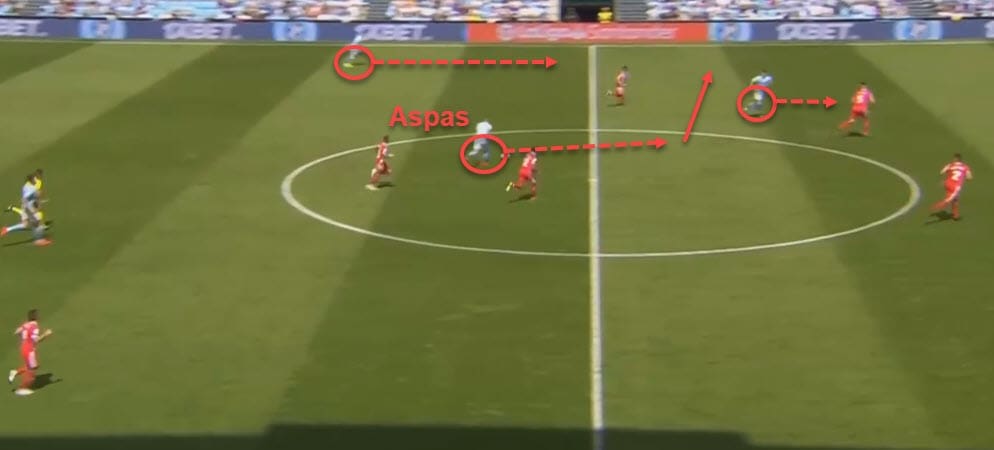
Now that the attention has successfully shifted from him to the other Celta Vigo player, Aspas can revert back from the role of a playmaker to a finisher in seconds. Once again, he slowly remains at his marker’s blind spot, almost like sneaking behind him, before releasing a burst of pace to take him by surprise and get into the box first.
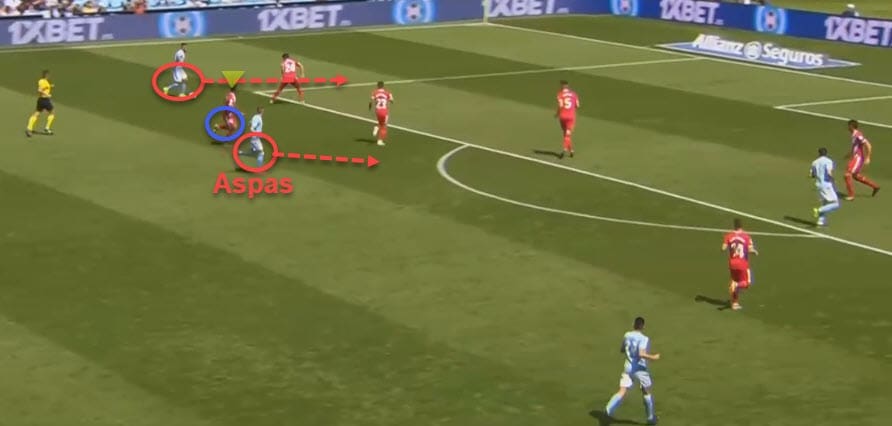
And before the defender can even realise that Aspas is lurking behind him, he’s already “left for dead” in a foot race that should not have been one in the first place. Once again, it seems like an easy poacher’s finish but the whole build-up and orchestrating to get there is quite remarkable from the 31-year-old.
And the end-product is an “easy tap-in”, as can be seen below with the final touch on the action by Celta Vigo’s talisman.
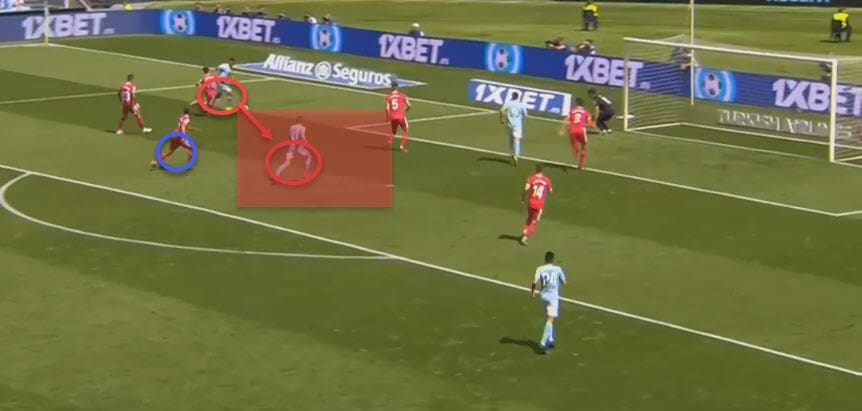
This is also not an isolated case, as can be seen from his heatmap below. Aspas tends to drop deeper and drift further out wide, whichever suits the team better at the moment and during the attacking phase. This is further supported by his great dribbling ability and good vision.
Receiving the ball deeper or out wide often means he has to create space for himself by slick movement and/or dribbling. His average of 2.98 dribbles per game with a pretty high 73.1% success ratio attests to that, as do 83.9% short passing accuracy and 77.3% long passing accuracy respectively.
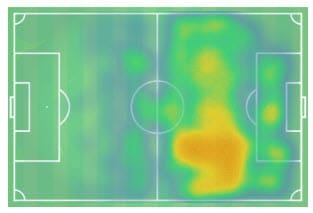
It has to be stressed, though, that even though he is a somewhat unorthodox forward who tends to be involved in the whole attacking process rather than strictly finishing it, his primary job is to score goals, not create them.
If we take a look at his overall attacking contribution in the 2018/19 La Liga season, we can see that he occupies the golden middle of the pack in the xG – xA ration among Spain’s best. Once again, Lionel Messi is mostly off the charts but Aspas shows he can tango with the rest.
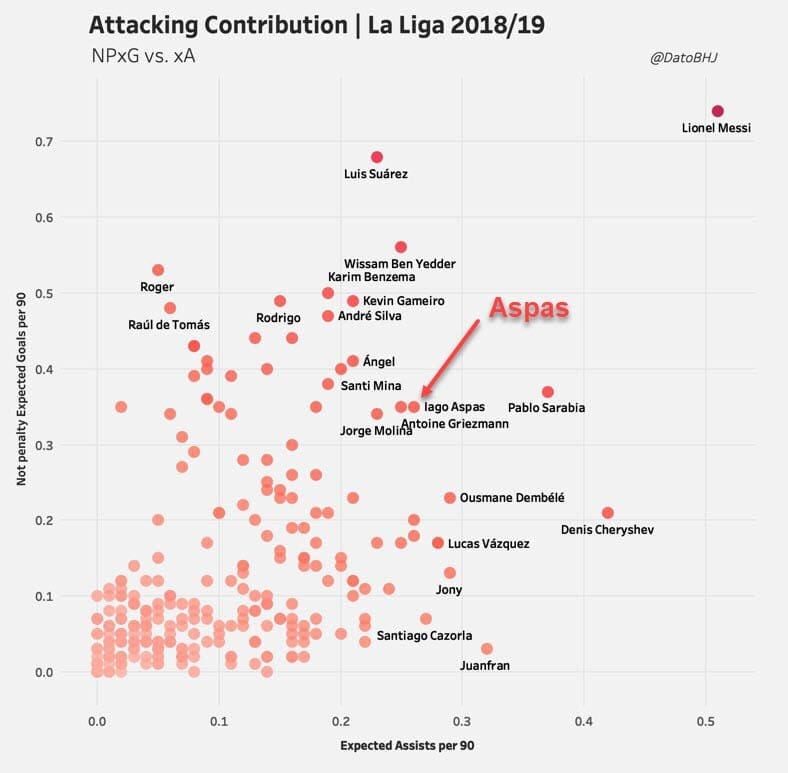
One other thing that has to be mentioned here is the number of games which varies from player to player and, of course, directly affects the charts.
Finally, even though this trait is somewhat self-explanatory and could’ve been already extracted from the previous examples but Iago Aspas is a clinical finisher, both when factoring in short and long-range efforts. 47.2% of his shots ended up on target this season alone as he averages 2.3 per game.
A quick look at his goals scored from open play this season and how good the chances actually were to begin with, tells a much clearer story. More often than not, he somehow finds his way into golden opportunities and ensures he has the best possible scenario to score.
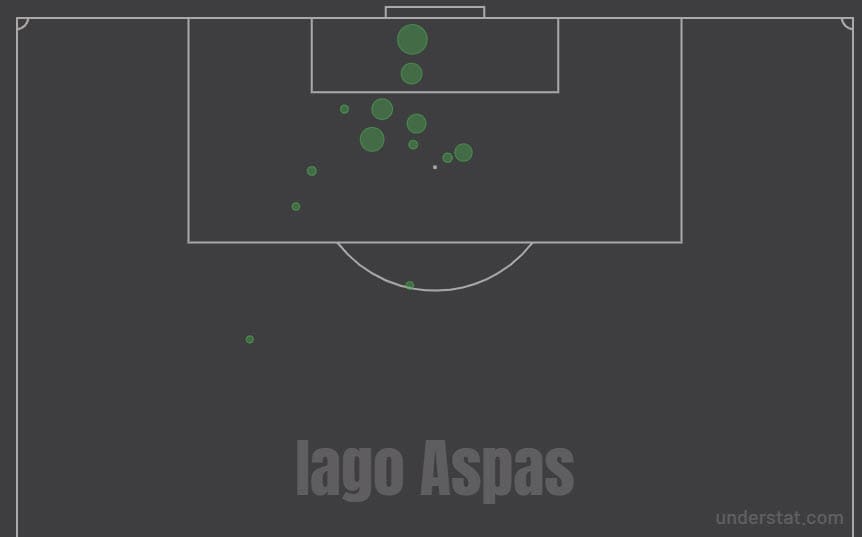
One of his favourite moves, though, is to wait around the edge of the box until a perfect opportunity arises and then, judging by the situation, he either remains there for a long-shot effort or charges into the danger area as we’ve seen in the previous examples. Both scenarios, however, have a tendency of ending in the same way: with a ball in the opposition’s net.
Conclusion
Iago Aspas is not always the player that comes to mind when you’re having a conversation about the world’s best strikers and he might not be a topic of conversation in your local pub but he’s a myth, a legend and an icon in Vigo. And rightly so.
He lives and breathes for his club – he is their martyr and their salvation. Ask any Celta fan and they will tell you the very same thing. Love and passion like that is something the modern footballers have extreme difficulty replicating. I’ll finish by quoting Sid Lowe: “It’s not that Iago Aspas is Celta’s best player; it is that, as this weekend demonstrated once again, Iago Aspas is Celta.”
And we couldn’t agree more.
If you love tactical analysis, then you’ll love the digital magazines from totalfootballanalysis.com – a guaranteed 100+ pages of pure tactical analysis covering topics from the Premier League, Serie A, La Liga, Bundesliga and many, many more. Buy your copy of the May issue for just ₤4.99 here, or even better sign up for a ₤50 annual membership (12 monthly issues plus the annual review) right here.

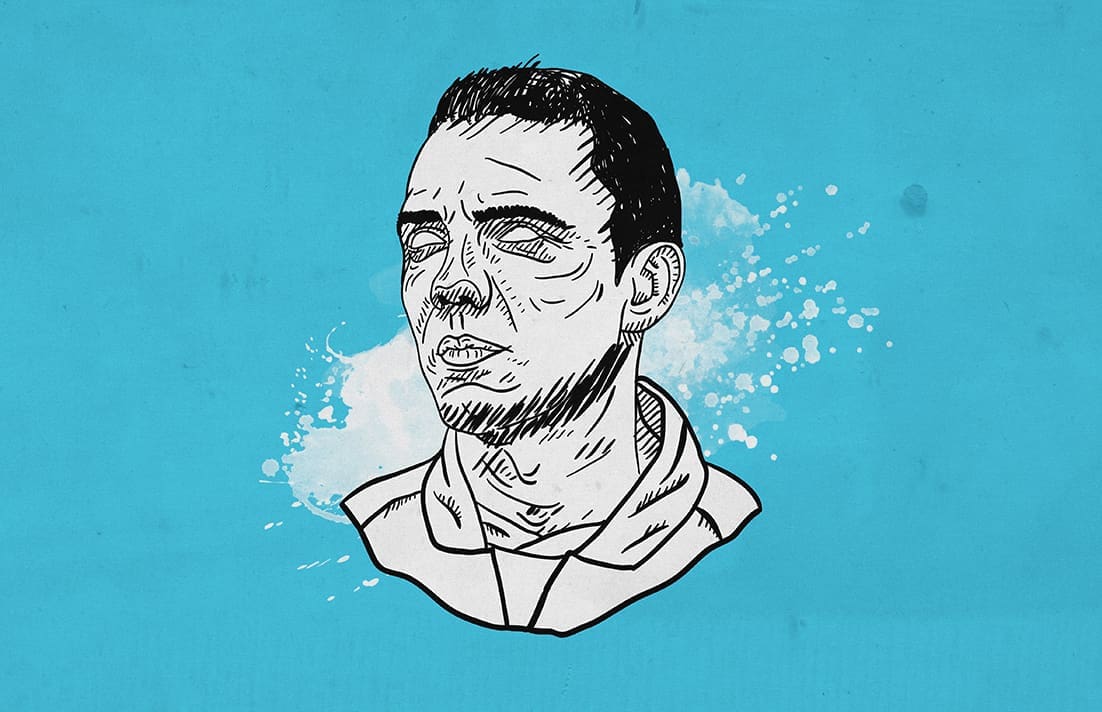




Comments